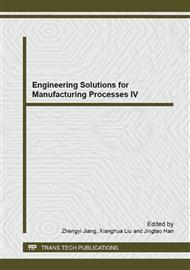p.925
p.929
p.933
p.938
p.942
p.947
p.951
p.958
p.962
Design and Establishment of HIL Testing Bench for Electromagnetic and Hydraulic Hybrid Brake System
Abstract:
This paper discussed the brake performance and reviewed the research progress of the eddy current-hydraulic hybrid brake system. The paper mainly described the design principle of HIL testing bench, and presented a structure drawing of HIL testing bench. Based on the basic principle and structure of HIL testing bench, a real testing bench including hardware, software, interface, and virtual controller on PCs etc., is manufactured. Through two kinds of experiments on wet and dry road, the results indicates that the hybrid brake system has a perfect performance, the HIL testing bench of hybrid brake system is very convenient to study and simulate the braking system. Because the simulation on PCs cannot solve lots of actual problems, with the HIL testing bench, more actual research project can be done in the future.
Info:
Periodical:
Pages:
942-946
Citation:
Online since:
February 2014
Authors:
Price:
Сopyright:
© 2014 Trans Tech Publications Ltd. All Rights Reserved
Share:
Citation:


